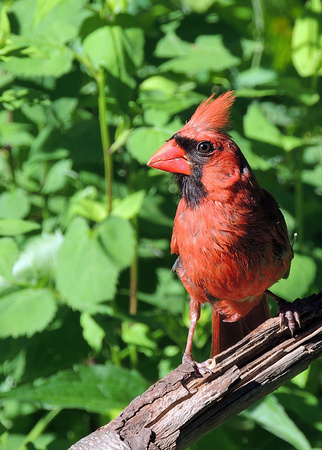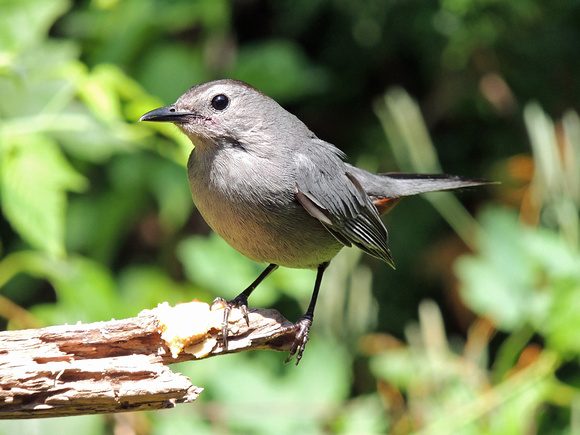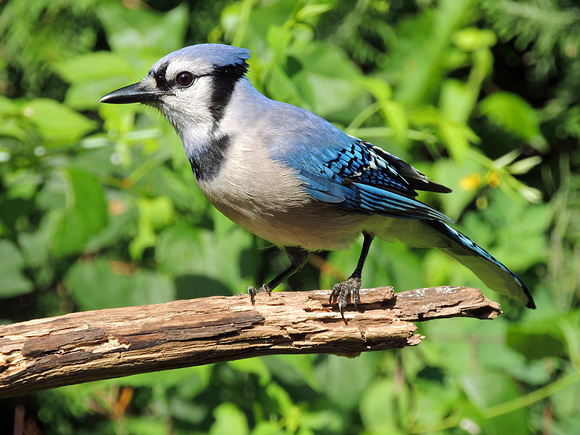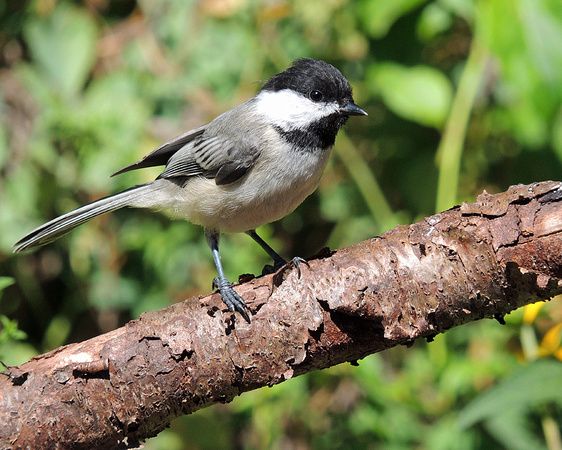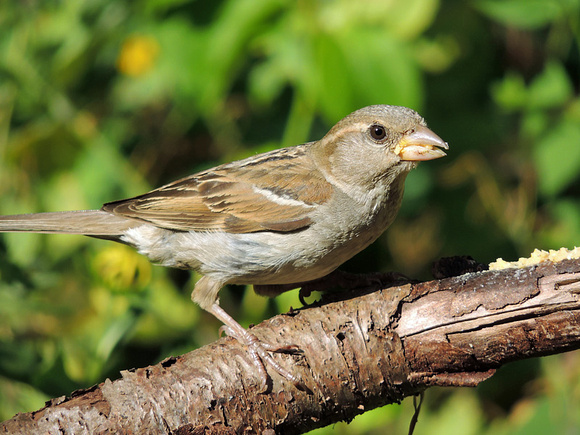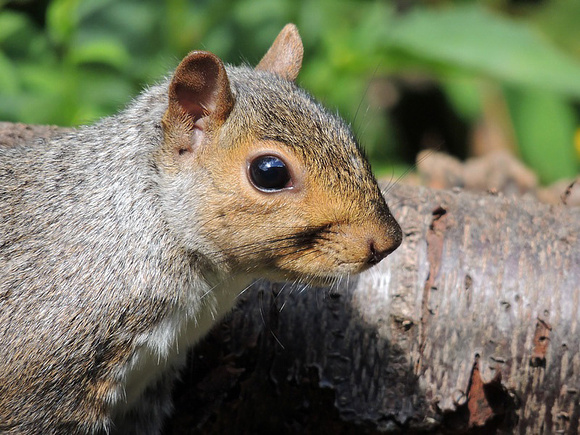Backyard Bird Photography TutorialYour backyard is a great place to photograph. With a simple setup, birds (and sometimes small mammals) will come to you providing wonderful photo opportunities from the comfort of your own home. Before setting up your station, here are a couple of considerations:
What kind of background do you want? Do you want it to look natural or are you solely interested in documenting species?
How does the light change throughout the day on your setup?
Where are you going to photograph from? If you can’t photograph from inside your house, you may be able to set up a backyard blind.
When you are constructing your station, you can make it as elaborate or as simple as you’d like. Here is one example of what I have used in the past:
The food is placed in a small container in between the two big logs I used for bases. I also had spread “Bark Butter” (a suet-based mixture of nuts and seeds) in a couple of locations, and it worked quite well. At this setup, I had cardinals, sparrows, chickadees, tufted titmouse, blue jays, wrens, woodpeckers, grey catbirds, and of course, squirrels and chipmunks (more on this in a bit).
It took a couple of weeks for the birds to get used to and become comfortable with the setup. I had already been using regular feeders in my backyard, so perhaps that was an advantage. During those couple of weeks I just observed the birds’ behavior instead of immediately trying to photograph them. I found that the birds would often land on one of the higher branches, pause for a second or two, drop down to the food, pick up some food and either fly away or return to one of the top branches and eat. So, when setting up to photograph them, I would prefocus on one of the top branches and wait. Eventually I got rid of the vertical branch, which limited even further the possible landing areas, and that increased my success tremendously.
I photographed from inside my house (my bathroom) and was quite close to the station. To minimize the chance of scaring the birds, I kept the lights in the bathroom out and turned off all camera sounds (shutter, focus lock, and the beep that occurred when pressing any of the buttons). I used a tripod and had the camera positioned where I wanted to photograph. Initially, I was ‘chasing’ the birds with my camera, but it wasn’t until I concentrated on a particular area that my success rate increased. There can be a flurry of activity at your feeder and sometimes you’re better off concentrating your photographic efforts on one location.
Pretty soon you’ll have to face the fact that you are going to have other visitors to your setup besides your new feathered friends. Squirrels and chipmunks can wipe out the food at your station surprisingly fast. You have a couple of options - you can just deal with it and keep replenishing the seed, or you can put out a dedicated squirrel and chipmunk feeder. I decided on the latter and it was a lot of fun. I used dried corn and peanuts and it did a nice job in keeping them away from the bird seed (Although the blue jays took a liking to the peanuts). These guys have to eat too and you can often get nice portrait photographs while they are feeding.
If you live near a store that specializes in selling bird seed and feeders, it’s worth it to pay them a visit. They can provide you with information on local species and give you tips on what types of seed or other foods to use. If you don’t have one near you, check out your local park - naturalists are usually on hand and can be a great help.
Feeders are great because you can photograph anytime you want and is the perfect place to test out new equipment or techniques. They are also a source of entertainment; sometimes its fun to watch the interactions of birds at the feeder and observe the different species that visit as the seasons change. Comments
No comments posted.
Loading...
|
Subscribe
RSS
Recent Posts
Behind the image: El Yunque
Favorite photography destinations: The Tongass National Forest
Wetlands: The Beauty and Mystery
Favorite photography destinations: Rocky Neck State Park
Behind the image: Turnagain Ice Falls
Behind the Image: Fox and Flower
Favorite photography destinations: Colonial Parkway
Blending In - updated
Postcards from Morocco: Essaouria
Postcards from Morocco: Out and About
Archive
January
February
March
April
May
June
July
August
September
October
November
December
|


